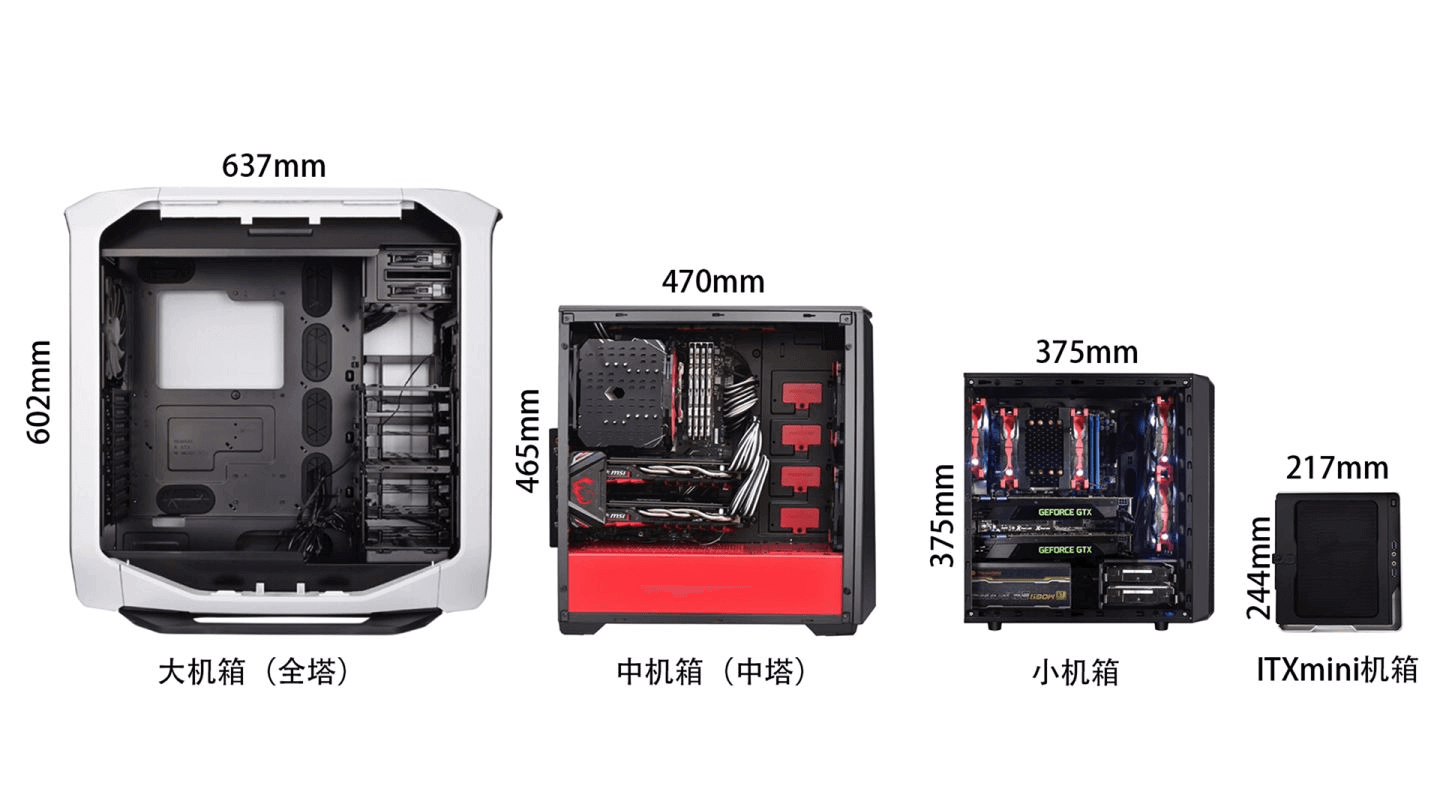How to Build a Computer
1. Choose a Computer Case

Note:
- The power supply should be bottom-mounted.
- Opt for a case with cable management options at the back.
- For everyday use, small form factor cases or mid-tower cases are suitable.
2. Select a Motherboard/CPU
Refer to the CPU Hierarchy Chart for guidance based on your needs. Keep in mind:
- At the same price point, choose Intel for gaming and AMD if gaming isn't a priority.
- You can buy a CPU as a standalone unit (usually safe from counterfeit products), but you'll need to provide your own CPU cooler.
- If you're providing your own cooler, consider the height limitations for the CPU cooler in your chosen case.
After choosing a CPU, select a motherboard. Note:
- Pair AMD processors with AMD motherboards and Intel processors with Intel motherboards.
- Ensure compatibility between the motherboard size (ATX, Micro-ATX, MINI-ITX) and the case.
Buying a CPU and motherboard as a bundle can be cost-effective.
3. Pick a Graphics Card
Refer to the Graphics Card Hierarchy Chart for guidance based on your needs. Consider the following:
- If your CPU has integrated graphics and your requirements aren't demanding, a discrete graphics card may not be necessary.
- Graphics cards with NVIDIA chips are referred to as "N cards," while those with AMD chips are called "A cards."
- For the same price, choose an A card for graphic design and rendering work, and an N card for gaming.
- N card models offer high-end options with lower power consumption, while A cards offer good value for the performance.
- Be mindful of the graphics card's length relative to your case's dimensions.
4. Choose Memory (RAM) Modules
Basic requirements for memory modules:
- DDR4 with a frequency of 2400.
- Differentiate between desktop and laptop memory modules.
- Based on your needs, start with 16GB for standard use, and go for 32GB or more for high-performance tasks.
- Consider the number of memory slots on your motherboard.
- Kingston and Samsung memory modules are recommended.
5. Select a Hard Drive
Hard drives come in two types: solid-state drives (SSD) and mechanical drives (HDD). Since SSDs offer higher transfer rates and are generally more expensive per capacity, they are usually used for the operating system and software, while less frequently used large files are stored on HDDs.
Basic requirements for SSDs:
- M.2 interface with NVMe protocol.
- Choose the capacity based on your needs.
- Compare read and write speeds.
- Samsung SSDs are recommended.
Basic requirements for HDDs:
- SATA 3.0 interface.
- 7200 RPM rotation speed.
- Theoretical transfer rate of 6Gbit/s.
- Choose the capacity based on your needs.
- Seagate HDDs are recommended.
6. Select a Power Supply
Pay attention to the following:
- Choose a power supply based on the dimensions specified by your case.
- Calculate the total power consumption of all your hardware, and add at least 100W as a safety margin (starting from 300W).
- Consider power supply efficiency ratings: White, Bronze, Silver, Gold, Platinum, Titanium (in order of increasing efficiency, with higher-priced options being more power-efficient).
7. Additional Accessories
Wireless Module:
- Preferably support Wi-Fi 6.
- Pay attention to the interface type.
Boot Drive:
- Consider the interface type.
This post is translated using ChatGPT, please feedback if any omissions.